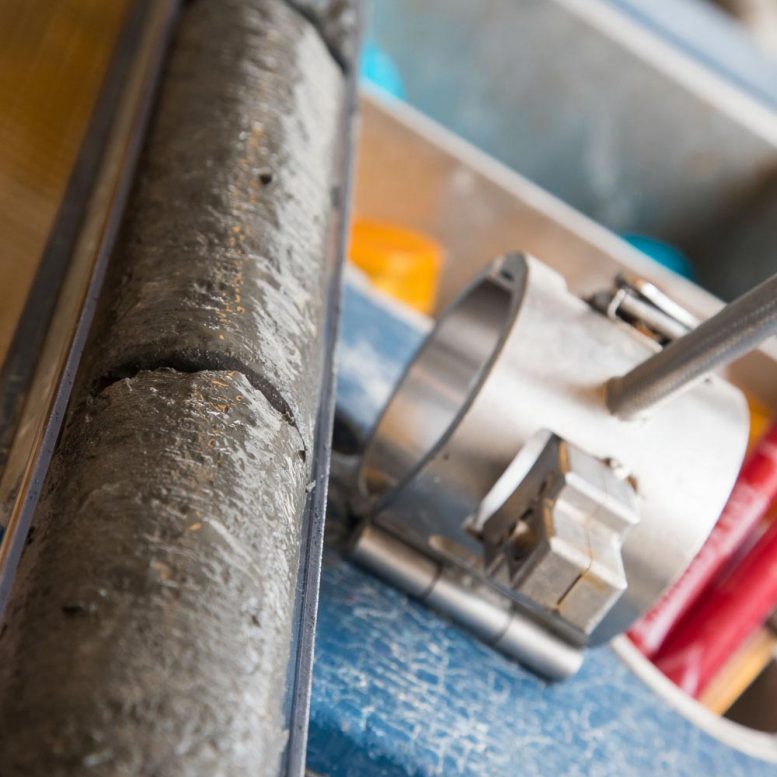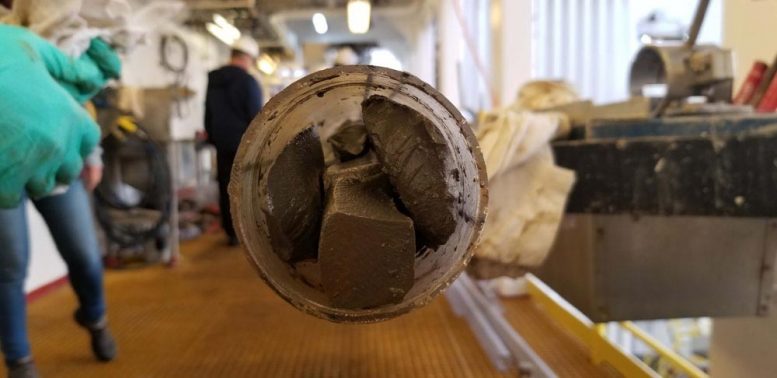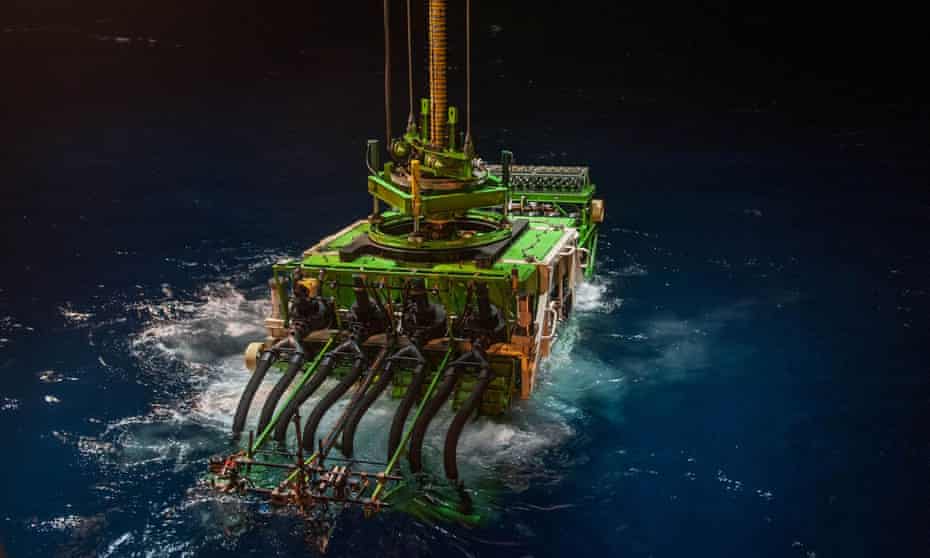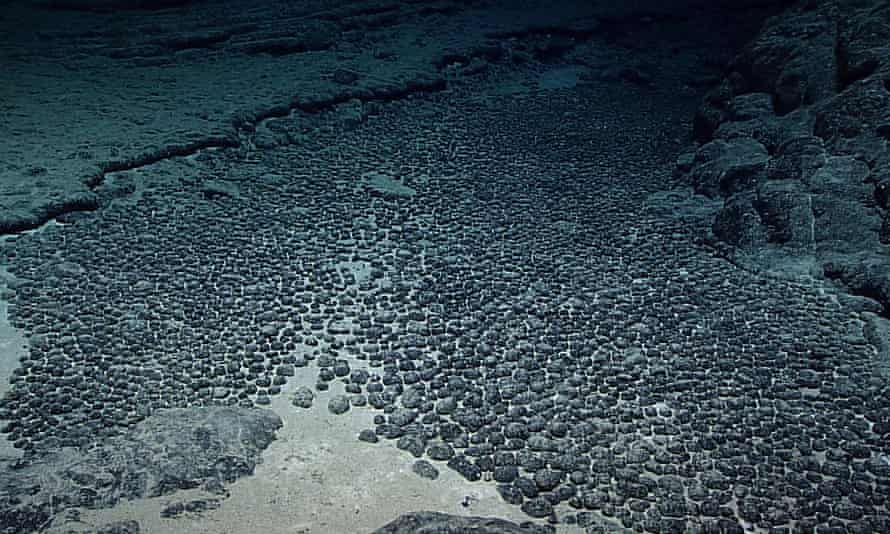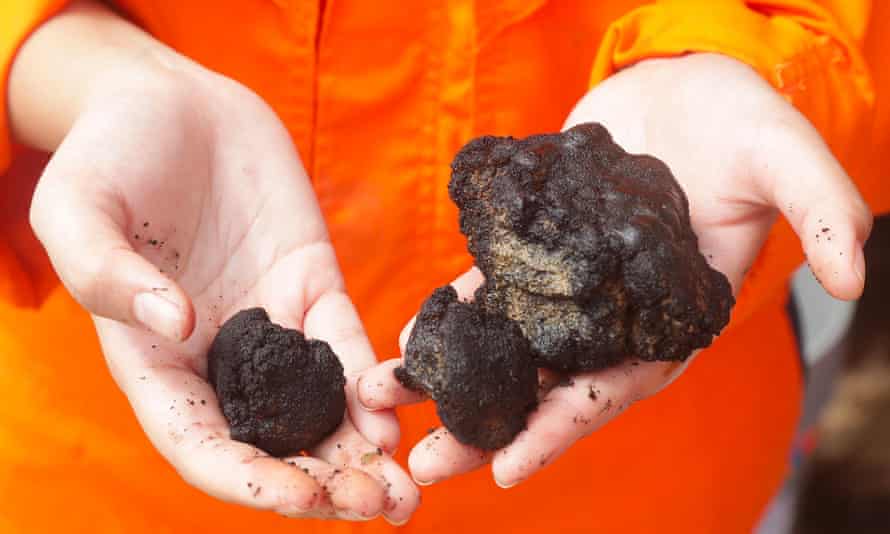Earth’s Oceans Were Stressed Before Abrupt, Prehistoric Global Warming
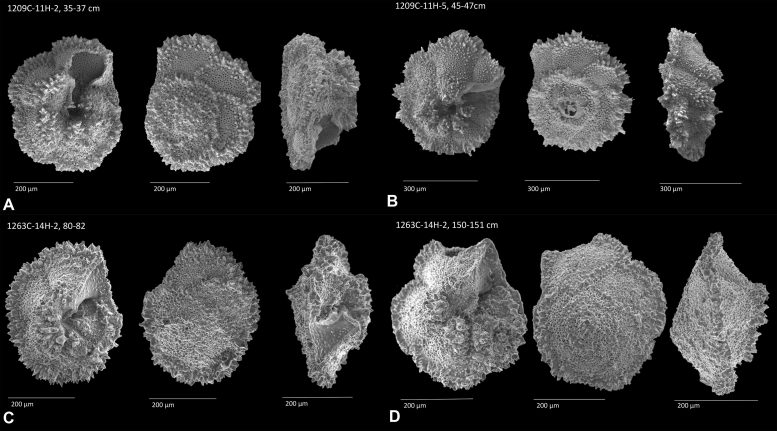
Scanning electron microscopy images of foraminifera from different angles. Credit: Northwestern University
Shelled organisms helped buffer ocean acidification by consuming less alkalinity from seawater.
- Third recent Northwestern study to detect calcification stress before and across ancient ocean acidification events
- Massive volcanic carbon dioxide inputs appear to cause ocean acidification
- New study focuses on the Paleocene-Eocene Thermal Maximum (PETM), a period of sudden, intense climate warming 56 million years ago
- Researchers studied the shells of prehistoric unicellular organisms that dwelled at the ocean’s surface during the PETM
- Shells were extracted from marine sediments deposited in the Atlantic and Pacific oceans
Microscopic fossilized shells are helping geologists reconstruct Earth’s climate during the Paleocene-Eocene Thermal Maximum (PETM), a period of abrupt global warming and ocean acidification that occurred 56 million years ago. Clues from these ancient shells can help scientists better predict future warming and ocean acidification driven by human-caused carbon dioxide emissions.
Led by Northwestern University, the researchers analyzed shells from foraminifera, an ocean-dwelling unicellular organism with an external shell made of calcium carbonate. After analyzing the calcium isotope composition of the fossils, the researchers concluded that massive volcanic activity injected large amounts of carbon dioxide into the Earth system, causing global warming and ocean acidification.
They also found that global warming and ocean acidification did not just passively affect foraminifera. The organisms also actively responded by reducing calcification rates when building their shells. As calcification slowed, the foraminifera consumed less alkalinity from seawater, which helped buffer increasing ocean acidity.
“The formation and dissolution of calcium carbonate help regulate the acidity and alkalinity of seawater,” said Northwestern’s Andrew Jacobson, a senior author of the study. “Our calcium isotope data indicate that reduced foraminiferal calcification worked to dampen ocean acidification before and across the PETM.”
“This is a pretty new concept in the field,” added Gabriella Kitch, the study’s first author. “Previously, people thought that only the dissolution of carbonates at the sea floor could increase alkalinity of the ocean and buffer the effects of ocean acidification. But we are adding to existing studies that show decreased carbonate production has the same buffering effect.”
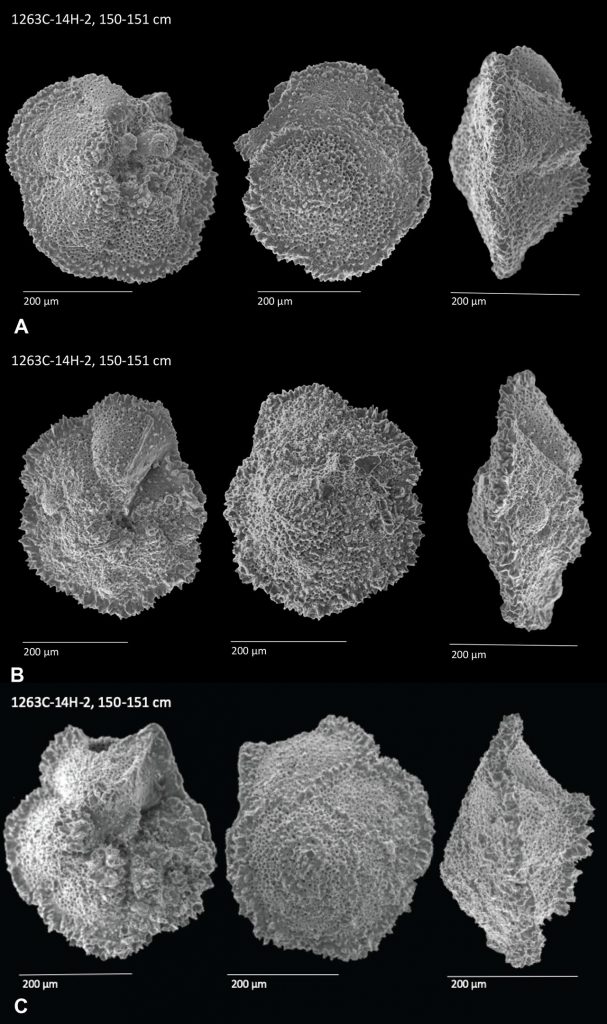
Scanning electron microscopy images of foraminifera from different angles. Credit: Northwestern University
The research was published recently in the journal Geology. This is the first study to examine the calcium isotope composition of foraminifera to reconstruct conditions before and across the PETM and the third recent Northwestern study to find that ocean acidification — due to volcanic carbon dioxide emissions — preceded major prehistoric environmental catastrophes, such as mass extinctions, oceanic anoxic events and periods of intense global warming.
Jacobson is a professor of Earth and planetary sciences at Northwestern’s Weinberg College of Arts and Sciences. Kitch is a Ph.D. candidate and National Science Foundation Graduate Research Fellow in Jacobson’s laboratory. Northwestern Earth science professors Bradley Sageman and Matthew Hurtgen, as well as collaborators from the University of California-Santa Cruz (UCSC) and the University of Kansas, coauthored the paper with Jacobson and Kitch.
Sorting microscopic shells
To study oceanic conditions during the PETM, the researchers examined the calcium isotope composition of foraminiferal fossils collected from two sites — one in the southeast Atlantic Ocean and one in the Pacific Ocean — by the Ocean Drilling Program.
Because each fossilized shell is about the size of a single grain of sand, UCSC researchers physically collected the tiny specimens by first identifying them under a microscope. After sorting the shells from bulk sediments, the Northwestern team dissolved the samples and analyzed their calcium isotope composition using a thermal ionization mass spectrometer.
“The work is very challenging,” Jacobson said. “To manipulate these tiny materials, you have to pick them up, one by one, with a wet paintbrush tip under a microscope.”
Stress prior to PETM
As the shells formed more than 56 million years ago, they responded to oceanic conditions. By examining these shells, the Northwestern team found that calcium isotope ratios increased prior to the onset of the PETM.
“We are looking at one group of organisms that built their shells in one part of the ocean, recording the seawater chemistry surrounding them,” Kitch said. “We think the calcium isotope data reveal potential stress prior to the well-known boundary.”
Other archives indicate that the atmosphere-ocean system experienced a massive carbon dioxide release immediately before the PETM. When atmospheric carbon dioxide dissolves in seawater, it forms a weak acid that can inhibit calcium carbonate formation. Although it is still undetermined, Earth scientists believe the carbon release most likely came from volcanic activity or cascading effects, such as a release of methane hydrates from the seafloor as a result of ocean warming.

Gabriella Kitch working with sediment samples in the lab. Credit: International Ocean Discovery Program
“My suspicion is that it’s both of these factors or some sort of combination,” Sageman said. “Most big events in Earth’s history represent a confluence of many actors coming together at the same time.”
Consistent pattern emerges
This is the third study led by Jacobson to find that ocean acidification precedes major environmental catastrophes that correlate with large igneous province eruptions. Last month, Jacobson’s team published results finding that volcanic activity triggered a biocalcification crisis prior to an ocean anoxic event that occurred 120 million years ago. Just over a year ago, Jacobson’s team published another study finding ocean acidification preceded the asteroid impact leading to the Cretaceous-Paleogene mass extinction event 66 million years ago, which included the demise of dinosaurs.
In all three studies, Jacobson’s team used sophisticated tools in his laboratory to analyze the calcium isotope composition of calcium carbonate fossils and sediment. Jacobson said a clear pattern is emerging. Influxes of carbon dioxide led to global warming and ocean acidification and, ultimately, to massive environmental changes.
“In all of our studies, we consistently see an increase in calcium isotope ratios before the onset of major events or extinction horizons,” Jacobson said. “This seems to point to similar drivers and common responses.”
“Perhaps the calcium isotope system has a sensitivity to the earliest phases of these events,” Sageman added.
Predictor for future ocean stress
Many researchers study the PETM because it provides the best analog for current-day, human-caused global warming. The carbon influx during the PETM is similar to the amount of carbon released during the past two centuries. The timescales, however, differ significantly. Temperatures during the PETM increased by 5 to 8 degrees Celsius over 170,000 years. With human-caused climate change, the same level of warming is projected to occur in less than 200 years, if carbon dioxide emissions remain unabated.
Frighteningly, terrestrial and ocean stress, including a major decrease in foraminiferal calcification, accompanied the PETM.
“The PETM is a model for what happens during major large carbon cycle perturbations,” Jacobson said. “A lot of predictions for Earth’s future climate rely on understanding what happened during the PETM.”
Reference: “Calcium isotope composition of Morozovella over the Late Paleocene-early Eocene” by Gabriella D. Kitch, Andrew D. Jacobson, Dustin T. Harper, Matthew T. Hurtgen, Bradley B. Sageman and James C. Zachos, 4 March 2021, Geology.
DOI: 10.1130/G48619.1
The study was supported by a David and Lucile Packard Fellowship (award number 2007-31757) and the National Science Foundation (award numbers NSF-EAR 0723151 and DGE-1842165).

